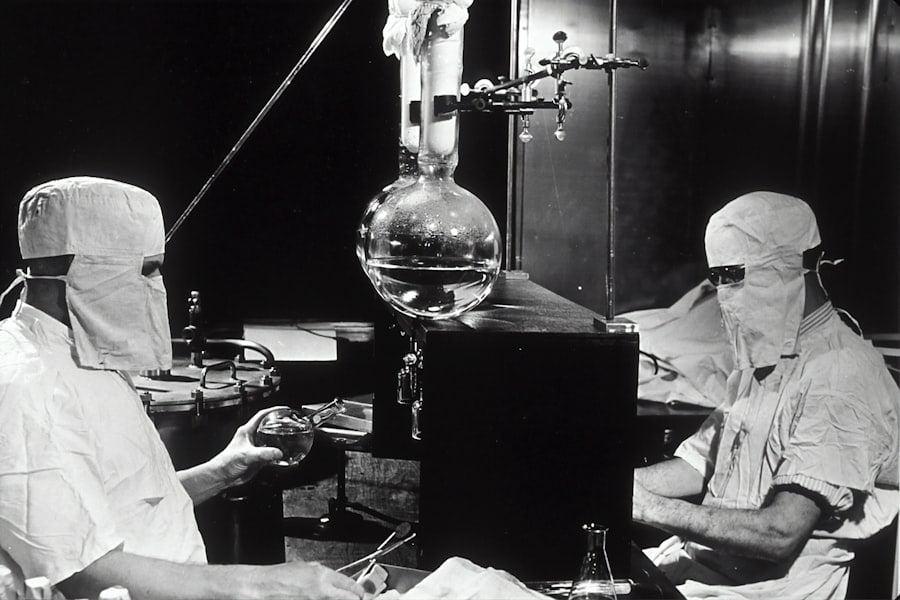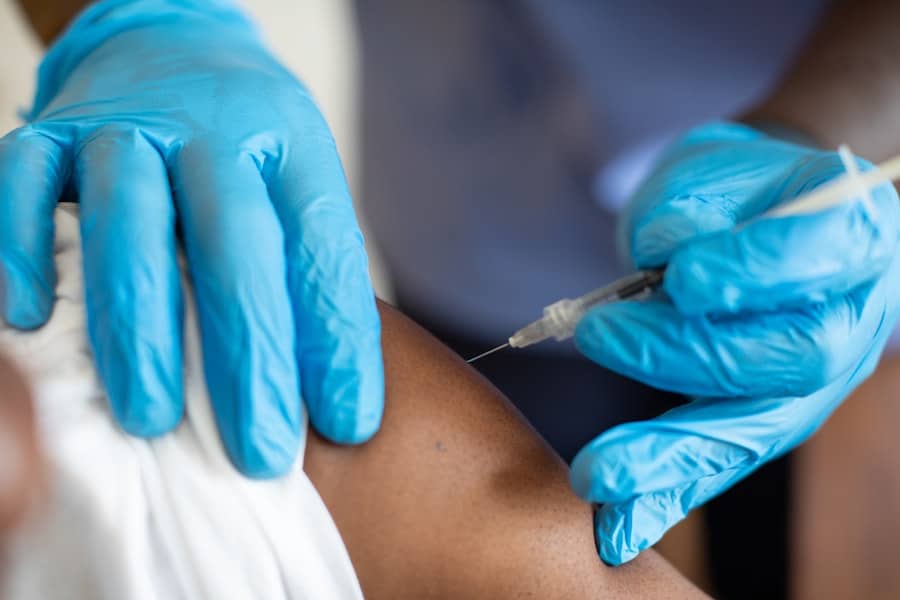Preventing Piercing Infections: Tips and Tricks
Body piercing infections are a common risk associated with the practice, and it is crucial to understand the potential dangers involved. When one receives a piercing, whether on the ear, nose, navel, or any other body part, an open wound is created. This presents a risk of bacteria and other pathogens entering the wound and causing an infection.
Infections may occur if the piercing is not performed in a sterile environment, if proper aftercare is not followed, or if the piercing is not done by a professional. Infections can manifest as pain, swelling, redness, and discharge from the piercing site. In severe cases, infections can lead to abscesses, scarring, and even systemic infections that require medical intervention.
It is essential to be aware of these risks before getting a piercing and to take the necessary precautions to prevent infections from occurring. Piercing infections can also be caused by allergic reactions to the metal used in the piercing jewellery. Some individuals may be allergic to certain metals, such as nickel, which is commonly found in lower-quality jewellery.
Allergic reactions can cause redness, itching, and irritation around the piercing site. In some cases, allergic reactions can lead to infection if the skin becomes broken and bacteria enter the wound. It is important to choose high-quality, hypoallergenic jewellery to reduce the risk of allergic reactions and subsequent infections.
Understanding the risks of piercing infections can help one make informed decisions about getting a piercing and taking the necessary steps to prevent infections from occurring.
Summary
- Piercing infections can lead to serious health complications if not treated properly
- Research and choose a professional piercer with a clean and sterile environment
- Clean your piercing regularly with saline solution and avoid touching it with dirty hands
- Look out for symptoms such as redness, swelling, and discharge as signs of infection
- Seek medical advice if you suspect you have a piercing infection to prevent further complications
Choosing a reputable and professional piercer
Research and Preparation
Before getting a piercing, it’s essential to do your research and find a piercer who has a good reputation and positive reviews from previous clients. Look for a piercer who works in a clean and hygienic studio, uses sterile needles and equipment for each client, and follows strict safety protocols. Avoid getting pierced at places such as shopping centre kiosks or tattoo parlours that do not specialise in body piercings.
Open Communication and Quality Jewellery
It’s also important to communicate openly with your piercer about any concerns or questions you may have before getting pierced. A professional piercer will be able to address any concerns you may have and provide you with information about aftercare and how to prevent infections. Additionally, make sure to ask about the type of jewellery that will be used for your piercing. High-quality, hypoallergenic jewellery is essential for minimising the risk of allergic reactions and subsequent infections.
Reducing the Risk of Infections
By choosing a reputable and professional piercer, you can significantly reduce the risk of piercing infections and ensure that your piercing is performed safely and hygienically.
Aftercare tips for preventing infections
Proper aftercare is essential for preventing infections and promoting healing after getting a piercing. After getting pierced, it’s important to follow the aftercare instructions provided by your piercer to reduce the risk of infections. This typically involves cleaning the piercing site with saline solution or a gentle cleanser, avoiding touching the piercing with dirty hands, and avoiding swimming or submerging the piercing in water for a certain period of time.
It’s important to keep the piercing clean and dry to prevent bacteria from entering the wound and causing an infection. In addition to cleaning the piercing site, it’s important to avoid certain activities that can increase the risk of infections. This includes avoiding tight clothing that can irritate the piercing, avoiding sleeping on the piercing, and avoiding using harsh products or ointments on the piercing site.
It’s also important to avoid changing or removing the initial jewellery too soon, as this can disrupt the healing process and increase the risk of infections. By following proper aftercare tips and avoiding activities that can increase the risk of infections, you can promote healing and reduce the likelihood of developing a piercing infection.
Recognising the signs of a piercing infection
| Signs of Piercing Infection | Description |
|---|---|
| Redness | Increased redness around the piercing site |
| Swelling | Excessive swelling and tenderness |
| Pus | Pus or discharge coming from the piercing |
| Pain | Increased pain or discomfort |
| Heat | Warmth or heat around the piercing area |
It’s important to be able to recognise the signs of a piercing infection so that you can seek treatment promptly if necessary. Common signs of a piercing infection include redness, swelling, pain, warmth, and discharge from the piercing site. The discharge may be yellow or green in colour and may have a foul odour.
In some cases, you may also experience fever, chills, or fatigue if the infection has become more severe. If you notice any of these symptoms, it’s important to seek medical attention as soon as possible. In some cases, a piercing infection can lead to an abscess, which is a painful lump filled with pus that forms near the piercing site.
If you notice any lumps or bumps near your piercing that are painful or warm to the touch, it’s important to seek medical attention to have it evaluated and treated. It’s important not to ignore the signs of a piercing infection, as untreated infections can lead to complications and may require medical intervention. By being able to recognise the signs of a piercing infection, you can take prompt action to seek treatment and prevent the infection from worsening.
How to properly clean and care for your piercing
Proper cleaning and care are essential for promoting healing and preventing infections after getting pierced. It’s important to clean your piercing site at least twice a day using saline solution or a gentle cleanser recommended by your piercer. Gently clean around the jewellery and remove any crust or discharge that may have formed around the piercing site.
Avoid using harsh products such as alcohol or hydrogen peroxide, as these can irritate the skin and delay healing. In addition to cleaning the piercing site, it’s important to avoid certain activities that can increase the risk of infections. This includes avoiding swimming in pools or hot tubs, as well as avoiding submerging the piercing in bodies of water such as lakes or oceans until it has fully healed.
It’s also important to avoid touching the piercing with dirty hands or allowing others to touch it, as this can introduce bacteria into the wound. By following proper cleaning and care techniques recommended by your piercer, you can promote healing and reduce the risk of developing a piercing infection.
What to do if you suspect you have a piercing infection
Seeking Professional Help
In some cases, a healthcare professional may prescribe antibiotics or other medications to treat the infection. It’s important to follow their instructions carefully and complete the full course of treatment to ensure that the infection is fully eradicated. In some cases, it may be necessary to remove the jewellery temporarily to allow the infection to heal properly.
Importance of Prompt Action
By seeking prompt medical attention if you suspect that you have a piercing infection, you can receive proper treatment and prevent complications from occurring.
Preventing Further Complications
Remember, prompt medical attention is crucial in preventing further complications and ensuring a full recovery from a piercing infection.
Long-term care and maintenance for preventing future infections
After your piercing has healed, it’s important to continue practicing good hygiene and care to prevent future infections. This includes regularly cleaning your jewellery with gentle soap and water to remove any buildup of dirt or oils that can harbour bacteria. It’s also important to inspect your jewellery regularly for signs of wear or damage that could potentially irritate your skin or cause an allergic reaction.
In addition to regular cleaning and maintenance of your jewellery, it’s important to continue practicing good hygiene around your piercing site. This includes avoiding touching your piercing with dirty hands, avoiding sharing jewellery with others, and avoiding sleeping on your piercing if possible. It’s also important to be mindful of any activities that could potentially irritate or damage your piercing, such as wearing tight clothing or participating in contact sports.
By practicing good long-term care and maintenance for your piercing, you can reduce the risk of future infections and promote healthy healing of your piercing site. It’s important to continue following these guidelines even after your piercing has fully healed to ensure that it remains healthy and free from infections in the long term. In conclusion, understanding the risks of piercing infections is essential for making informed decisions about getting pierced and taking steps to prevent infections from occurring.
Choosing a reputable and professional piercer is crucial for reducing the risk of infections and ensuring that your piercing is performed safely and hygienically. Proper aftercare is essential for promoting healing and preventing infections after getting pierced, while recognising the signs of a piercing infection is important for seeking prompt treatment if necessary. By properly cleaning and caring for your piercing, seeking prompt medical attention if you suspect an infection, and practicing good long-term care and maintenance, you can reduce the risk of future infections and promote healthy healing of your piercing site.
If you’re looking for more information on body piercing, you should check out The Piercing Places blog. This website offers a wealth of knowledge on all things related to body piercing, including tips for aftercare, information on different types of piercings, and advice on choosing a reputable piercing studio. You can also find answers to the top 10 frequently asked questions about body piercing at The Piercing Places FAQ page. Whether you’re a piercing enthusiast or someone considering getting their first piercing, these resources are a great way to educate yourself and make informed decisions about body modification.
FAQs
What are the common signs of a piercing infection?
Common signs of a piercing infection include redness, swelling, tenderness, warmth, and discharge of pus or blood from the piercing site. Additionally, you may experience a fever, chills, or a general feeling of unwellness.
How can I prevent piercing infections?
To prevent piercing infections, it is important to follow proper aftercare procedures, which include cleaning the piercing with saline solution or a gentle cleanser, avoiding touching the piercing with dirty hands, and avoiding submerging the piercing in unclean water. It is also important to avoid changing or removing the jewellery too soon and to avoid using harsh products on the piercing.
How long does it take for a piercing to heal?
The healing time for a piercing can vary depending on the location of the piercing and individual factors such as your overall health and how well you care for the piercing. Generally, it can take anywhere from a few weeks to several months for a piercing to fully heal.
What should I do if I suspect my piercing is infected?
If you suspect that your piercing is infected, it is important to seek medical attention from a healthcare professional. They can provide the appropriate treatment, which may include antibiotics, and advise you on how to care for the infected piercing.
Can I use over-the-counter products to treat a piercing infection?
It is not recommended to use over-the-counter products to treat a piercing infection without consulting a healthcare professional first. Using the wrong products can worsen the infection or cause further complications. Always seek professional medical advice for treating a piercing infection.





























